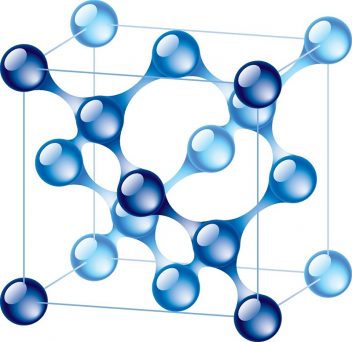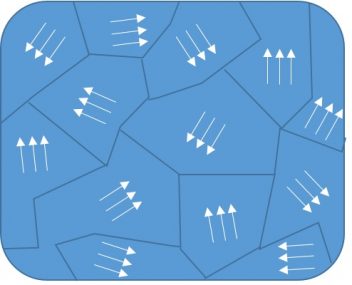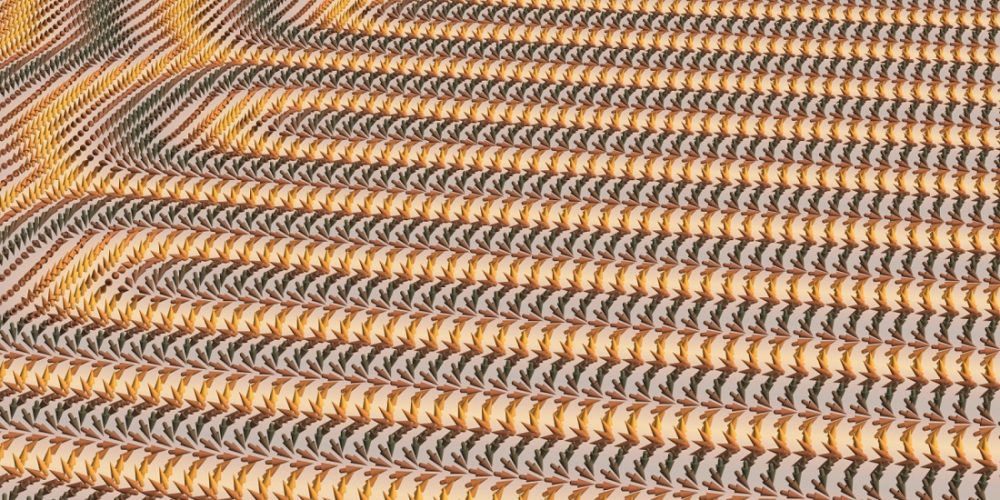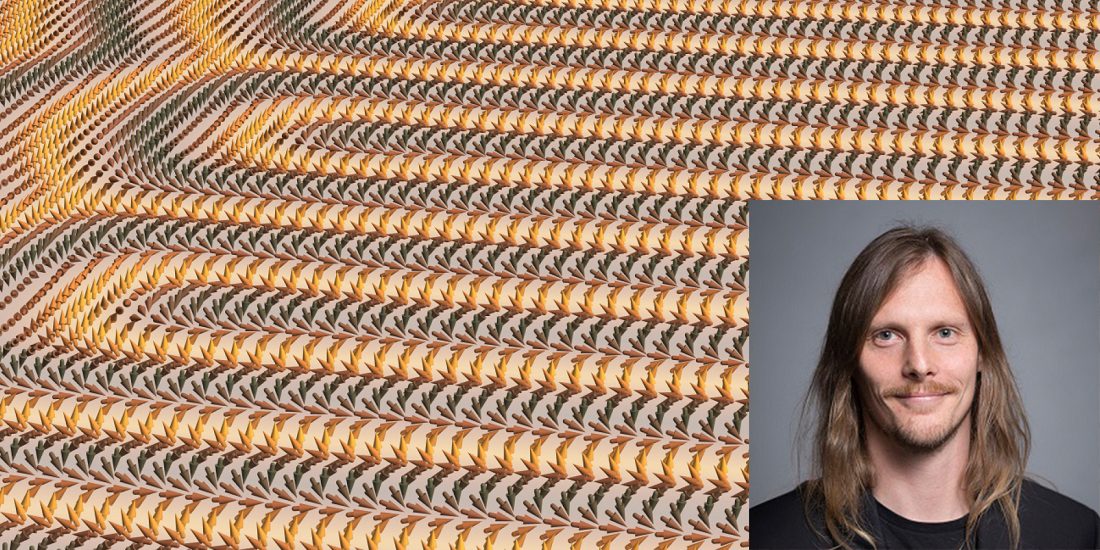On the topology of helimagnets and difficult-to-understand things
There are in fact good reasons to care about vortex structures in helimagnets. Our fearless Gemini reporter explains.
Physicists at NTNU recently published a new discovery in the prestigious journal Nature Physics in collaboration with researchers from universities in Germany, Switzerland and Japan.
What the researchers found were special domain walls with magnetic vortex structures in helimagnets. These structures arise due to topological defects.
If you find this confusing, you’re not alone. But keep reading.

Apparently perfect crystalline structures can have magnetic structures with their very own organization. Illustration: Colourbox
Dennis Meier is one of NTNU’s Onsager Fellows and an associate professor in the Department of Materials Science and Engineering who studies nanolevel physics.
Meier’s recent article about the new domain walls is his tenth to be published in Nature Group journals. He and Markus Garst (TU Dresden) are the senior authors of this new work, which is based mainly on the research of their PhD students Peggy Schoenherr (experiment) and Laura Köhler (theory).
Meier and his colleagues identified three distinct variants of magnetic domain walls in the helimagnet iron germanium (FeGe).
- You might also like: A spin on the future
What in the world is a helimagnet?
One of two things can create a magnetic field:
- Electric current, as in electromagnets or
- Spin, which is the magnetic moment of an atom’s elementary particles.
These are actually two sides of the same coin, but you can forget about that in this context. Let’s stick to the second option – the spin or magnetic moment.
The type of magnetism we commonly think of is ferromagnetism. This type of magnetic order occurs when the magnetic moments of the atoms in a substance are essentially aligned – that is, they point in the same direction. Then they attract or repell other magnetic objects.
With helimagnets, the atoms’ magnetic moments arrange themselves in spiral or helical patterns instead.
- You might also like: Controlling problem ice — by cracking it
So what in the world is a domain wall?
Iron germanium is a mixture of the metal iron and the metalloid germanium. It has a crystalline structure similar to what we find in a diamond, where the same pattern of atoms repeats itself.

Figure 1: In ferromagnets, each of the domain’s atoms has magnetic moments that point in the same direction. Illustration: Wikimedia Commons
In reality, this material is not as uniform as it looks. The crystal may be close to perfect, but the magnetic structure can simultaneously have its own organization.
In other words, an apparently perfect crystalline structure in a solid is divided into separate areas, each with its own special magnetic properties. These magnetic regions are called domains.
In ferromagnets, the atoms in each of these domains have magnetic moments pointing in the same direction, but the direction varies between neighbouring areas. (See Figure 1.)
In helimagnets we find domains with spiral patterns instead. (See Figure 2.)
The transitions between these areas are called domain walls, which are what Meier and his colleagues are studying.
Like, we were lucky
The international research group discovered three new classes of domain walls in helimagnets. The special patterns occur because of so-called topological defects.
The researchers were lucky to find them, Meier says, with perhaps a bit more modesty than necessary.
Like really – lucky?
Onsager Fellowship Programme
The Onsager Fellowship Programme is designed to recruit young, internationally renowned researchers to strengthen the university's academic communities.
Researchers in the programme should have a minimum of three to five years postdoctoral experience, a high level of professional skill and the ability to work independently. The positions are temporary, with the possibility of a permanent posting upon completion of the programme.
Yes, he says. But you have to know when you’re lucky, he adds with a grin.
Their discoveries are completely new to science. So what is it like to be among the leading teams within a research field?

Figure 2: In helimagnets we find spiral-patterned domains. When two of these domains meet, exotic spin structures arise. Illustration: Nature Physics
According to Meier it makes life easy, because you don’t have to think too much. “Anything we do in the field will be something new,” he says.
He has worked closely with both experimental physicists and pure theorists and praises the collaborative approach taken with his international colleagues.
Why we should care
Domain walls can have exotic magnetic properties that the regions which they separate don’t reveal. The walls, for example, may interact more strongly with an electric current and could be used for data transfer and storage in the future. Maybe.
This discovery may someday provide an alternative to today’s computers, which flip the magnetic field and toggle the voltage between 1 and 0, or ‘on’ and ‘off.’ This method is far more energy intensive than moving topological magnetic structures along so-called “racetrack memories.”
“The next thing we’re going to do is try to influence these new domain walls,” says Meier.
The researchers will attempt to direct these walls with an electric current – that is, get control of them. For this project Meier and his team at the Department of Materials Science and Engineering will collaborate with colleagues from the new Centre of Excellence QuSpin (Centre for Quantum Spintronics) at NTNU.
All this work could one day lead to faster computers that use far less electricity. Maybe. In any case, it’s interesting. And beautiful.
The patterns reflect similar ones found in liquid crystals. The molecules in liquid crystals may be tiny, but they’re huge compared to the nanostructures that Meier and his colleagues are studying. Patterns in nature recur at different scales.
The discovery is also an alternative to the research being done on skyrmions, which may also eventually be used to transfer information quickly and with minimal electricity.
What are skyrmions? I have no idea, and now we’ve learned enough for one day. Guess you’ll have to read about them in another article.
Reference:
Topological domain walls in helimagnets. P. Schoenherr, J. Müller, L. Köhler, A. Rosch, N. Kanazawa, Y. Tokura, M. Garst & D. Meier, Nature Physics, doi:10.1038/s41567-018-0056-5 (2018) https://www.nature.com/articles/s41567-018-0056-5






